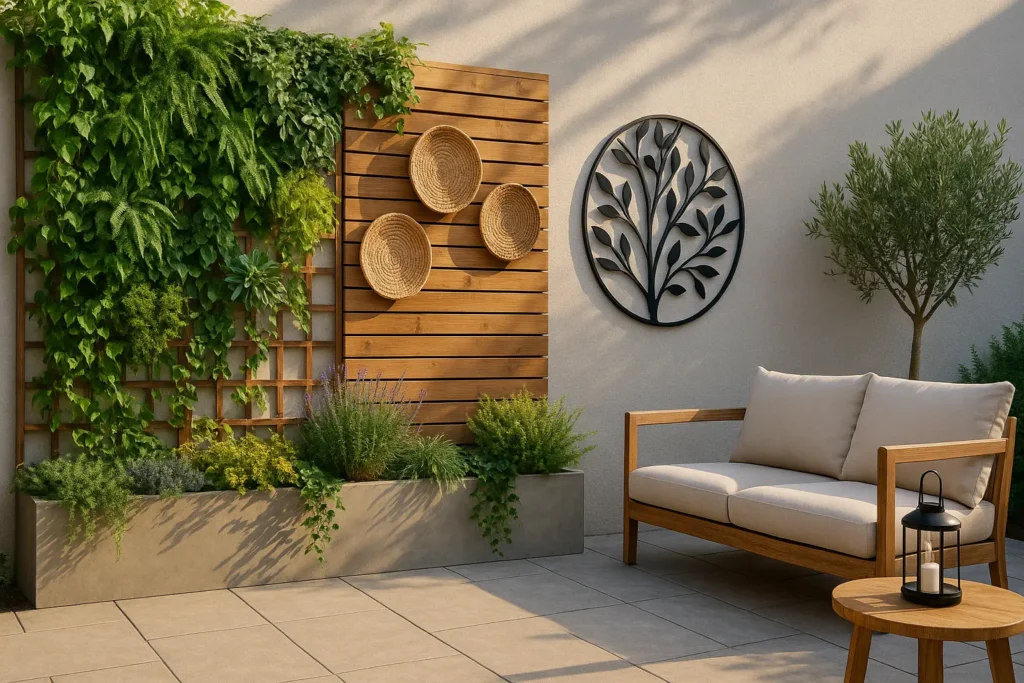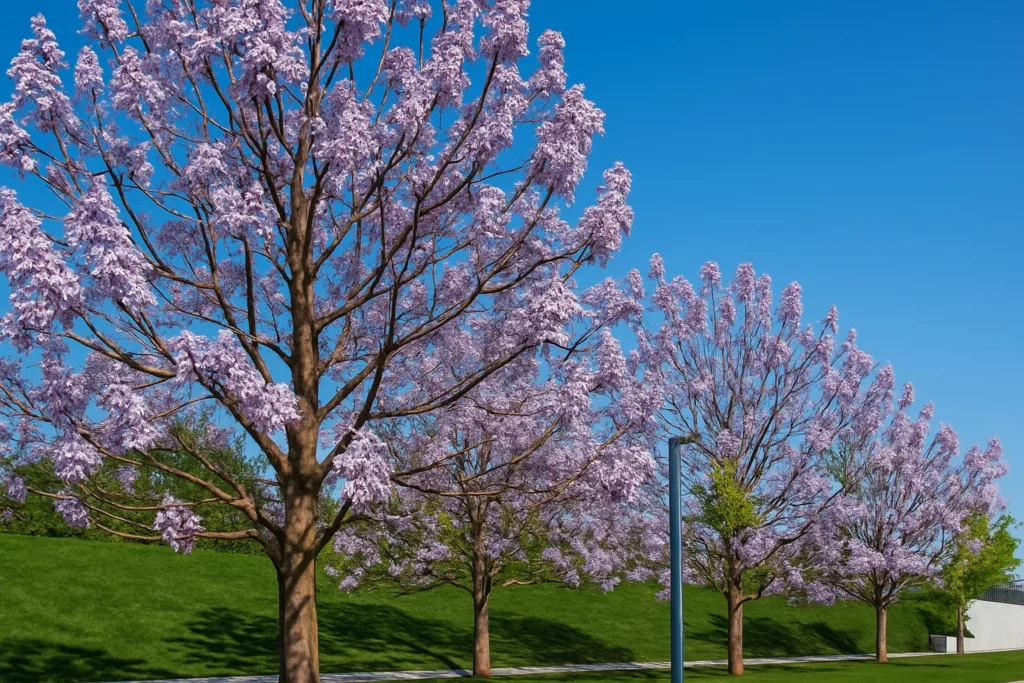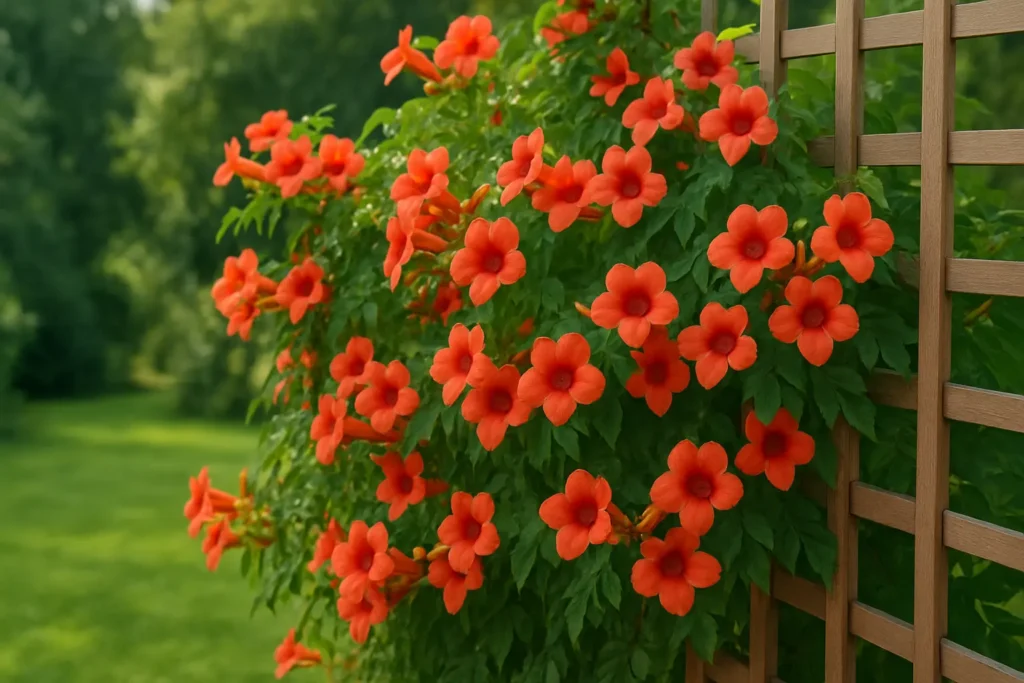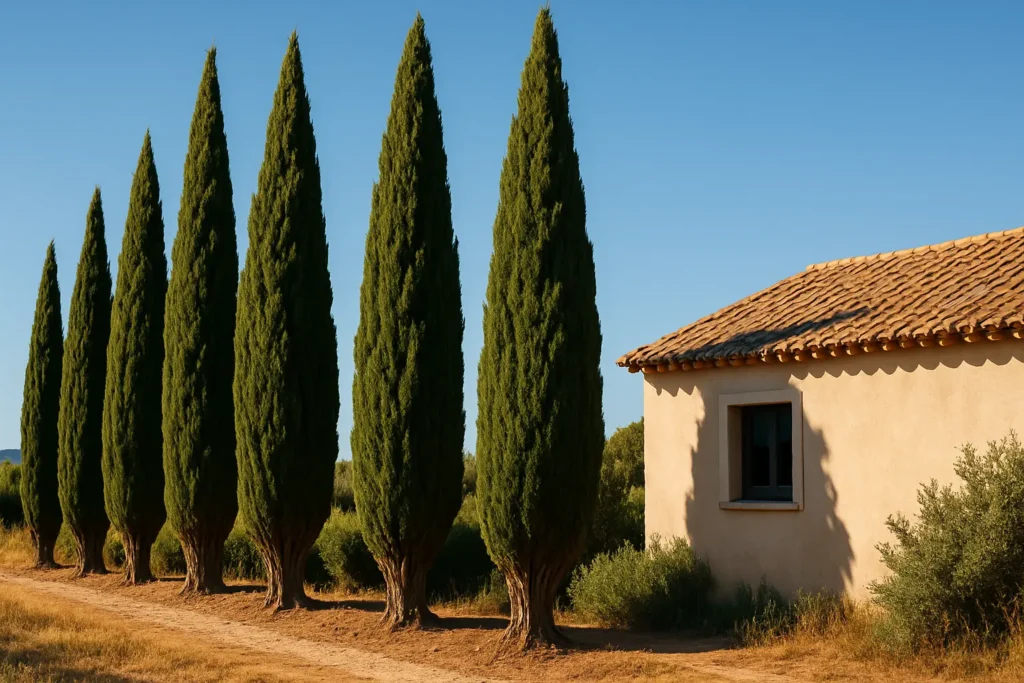The fig tree, with its lush foliage and sweet fruits, appeals to many enthusiasts who want to bring a Mediterranean touch to their garden. garden. However, the disadvantages of the fig tree are numerous and must be taken into account before planting it in your garden. Between the fig tree's invasive roots and its restrictive maintenance, these disadvantages can turn a dream of greenery into a real nightmare. Let's take a look at the five main disadvantages and dangers of growing fig trees, as well as some tips for limiting them, or even getting around them, and creating a harmonious garden where this tree can flourish without causing damage.
Our article in brief:
The fig tree, despite its ornamental and taste qualities, has several important drawbacks to consider before planting it.
- The roots of the fig tree are invasive and can extend over 15 meters. They therefore constitute a real danger for buildings and pipelines
- The presence of irritating latex on the fig tree requires protective equipment during maintenance
- The maintenance of the fig tree is time-consuming between the constant picking of fallen fruit and slippery leaves
- The fig tree creates shade excessive, which limits the surrounding plant biodiversity
- The growth of a fig tree is significant and its imposing dimensions reach up to 75m² for an adult tree.
Summary
The fig tree's root system: a danger to your property
The fig tree develops a particularly aggressive and invasive root system which represents its main constraint. These roots can extend horizontally for more than 15 meters, avidly seeking water and nutrients. Their power is such that they do not hesitate to lift paving, crack concrete and infiltrate pipes, causing damage that is costly to repair.
The expansion of fig tree roots directly threatens building foundations, walls and septic tanks. To avoid these inconveniences, the planting the fig tree must maintain a minimum distance of 5 to 10 meters from any construction. This distance will allow the roots of the fig tree to spread without too much danger.

Finally, this intense underground competition imposed by the rfig tree root also suffocates neighboring plants, depriving them of resources essential for their development. If there is a disadvantage of the fig tree So, this is the one to remember. So, don't neglect the location and planting distance of your fig tree before you can no longer correct it.
How to limit the expansion of fig tree roots?
To contain the growth and invasion of fig tree roots, you can install a root barrier. This rigid membrane, dug vertically into the ground at a depth of 60-80 cm, forms an impassable barrier that is very effective. Growing in pots is also an interesting alternative, naturally limiting root development while allowing the tree to be moved as needed.
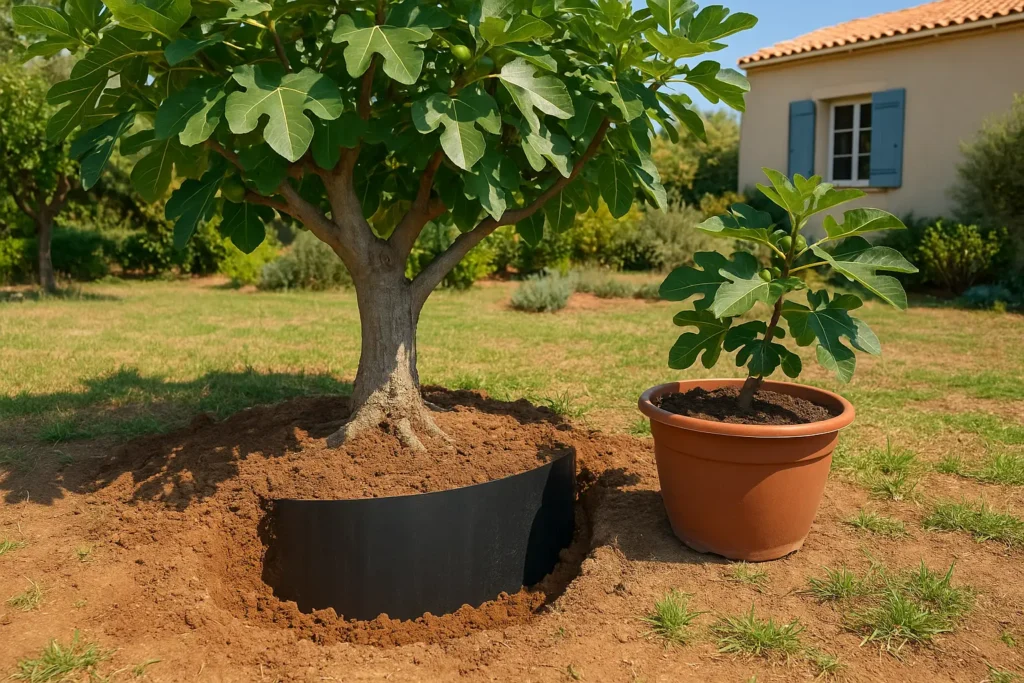
Can you cut the roots of a fig tree?
Cutting the roots of a fig tree is a delicate operation that should be approached with caution. While it may seem like a quick solution to limit their growth, this procedure carries several risks that can compromise the tree's health.
Indeed, the roots of the fig tree ensure both anchoring in the soil as well as the absorption of water and nutrients. Pruning the roots of a fig tree indiscriminately can therefore cause significant stress, slow its growth, trigger disease, or even cause its death. Pay particular attention to large roots, known as scaffold roots. These should never be cut abruptly, as this could unbalance the structure of the tree or expose the fig tree to ground-borne parasites.
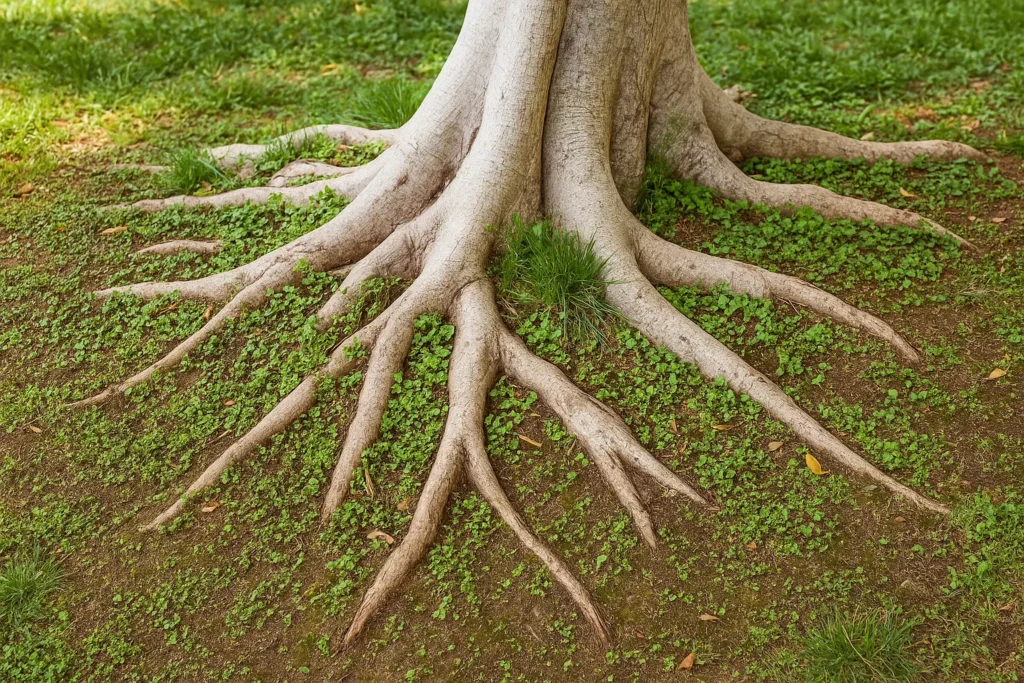
When and how to prune the roots of a fig tree?
Pruning the fig tree's root system should only be considered in very specific cases:
- roots lifting a slab
- Threat of a pipeline
- Encroaching on a structure.
Pruning should then be done outside the period of active growth, ideally at the end of winter or very early spring, when the fig tree's sap is circulating little.
Use a sharp tool to make a clean, sharp cut, and be sure to carefully fill the area with a draining substrate. Applying a praline or natural healing agent to the root wound can also help prevent infection.
A gentler solution: maintenance pruning in pots
If your fig tree is grown in a pot, root pruning is a common and more tolerable practice. Every 3 to 4 years, a light root refreshment helps control growth without harming the vigor of your tree.
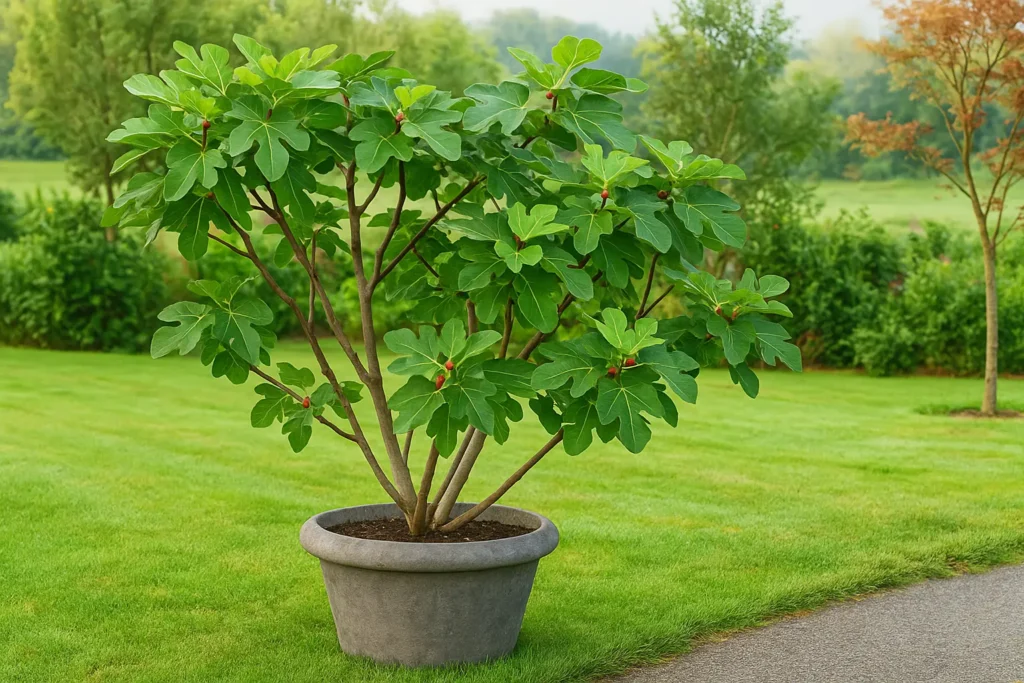
Sap and leaves: The risks of allergies and burns should not be underestimated
The milky sap of the fig tree, called latex, contains potentially dangerous phototoxic compounds that can cause skin burnsThese furocoumarins cause skin irritations that intensify with sun exposure. Symptoms include redness, intense itching, and sometimes even painful blisters.
Furthermore, the hairy, rough leaves are also a source of discomfort to the touch. Some people develop allergic rhinoconjunctivitis simply by breathing near the tree. These health risks require precautions during any work on the fig tree, particularly during pruning, planting, or harvesting.
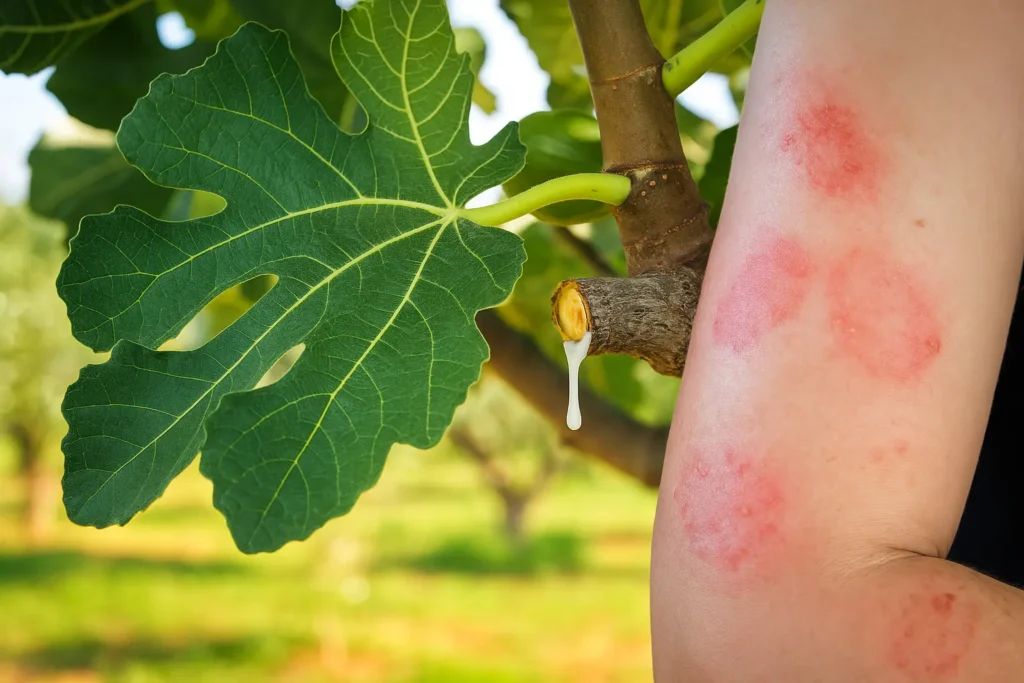
Protective measures when maintaining your fig tree
To handle or prune a fig tree safely, protective equipment must be complete:
- Thick, waterproof gloves covering the wrists
- Long sleeves and pants, even in hot weather
- Protective glasses to prevent splashes into the eyes
- Wash immediately with soap and water in case of contact with sap.
A demanding interview that requires time and effort
Managing a fig tree requires a regular and time-consuming maintenance throughout the year. Ripe figs continually fall to the ground, attracting unwanted insects and animals such as wasps, hornets, and ants. These crushed fruits permanently stain terraces and create an environment conducive to fungal diseases.

THE fig tree heals with difficulty after pruning, which considerably complicates this nevertheless necessary operation. Large cuts leave wounds that take years to close after pruning the fig tree, thus providing an entry point for parasites. Finally, the large, leathery leaves form a slippery carpet in autumn that requires careful collection to avoid falls.
Annual fig tree maintenance schedule
Optimal management of a fig tree is organized according to the seasons. In spring, light formative pruning and fertilization prepare for the growing season. Summer requires almost daily collection of fallen fruit and monitoring for pests. Fall requires cleaning up dead leaves, while winter requires frost protection in colder regions.
The ecological impact and excessive shade on your garden
The imposing development of the fig tree creates a dense shaded area unfavorable to plant biodiversity surrounding area. Its broad foliage blocks up to 90% of sunlight, preventing the growth of plants below. This change in local ecological conditions gradually impoverishes the floral variety of your outdoor space.
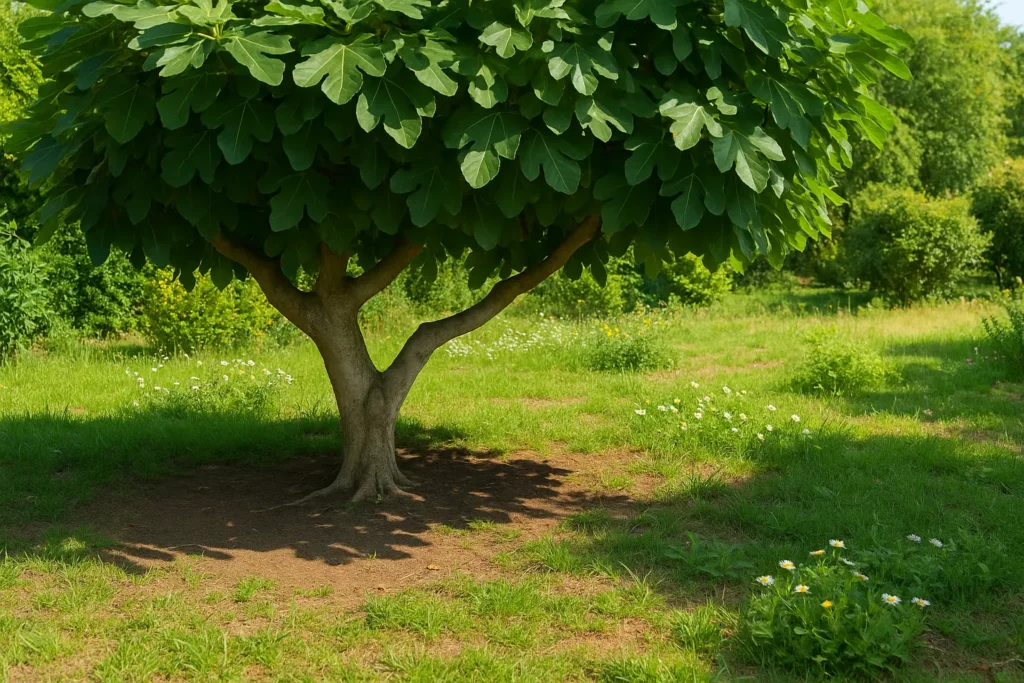
| Environmental aspect | Disadvantages of the fig tree in the garden | Possible solution |
|---|---|---|
| Projected shadow | Limits the growth of surrounding plants | Planting on the north side of the garden |
| Root system | Competition for water and nutrients | Root barrier or potted planting |
| Dead leaves | Slippery mat and soil pH change | Regular collection in autumn |
What plants can coexist with a fig tree?
Despite its dominance, some plants adapt to the proximity of a fig tree. Mediterranean plants such as the rosemary, there lavender or the thyme withstand competition from the fig tree's root system and partial shade. Spring bulbs also benefit from available light before the foliage is fully developed.
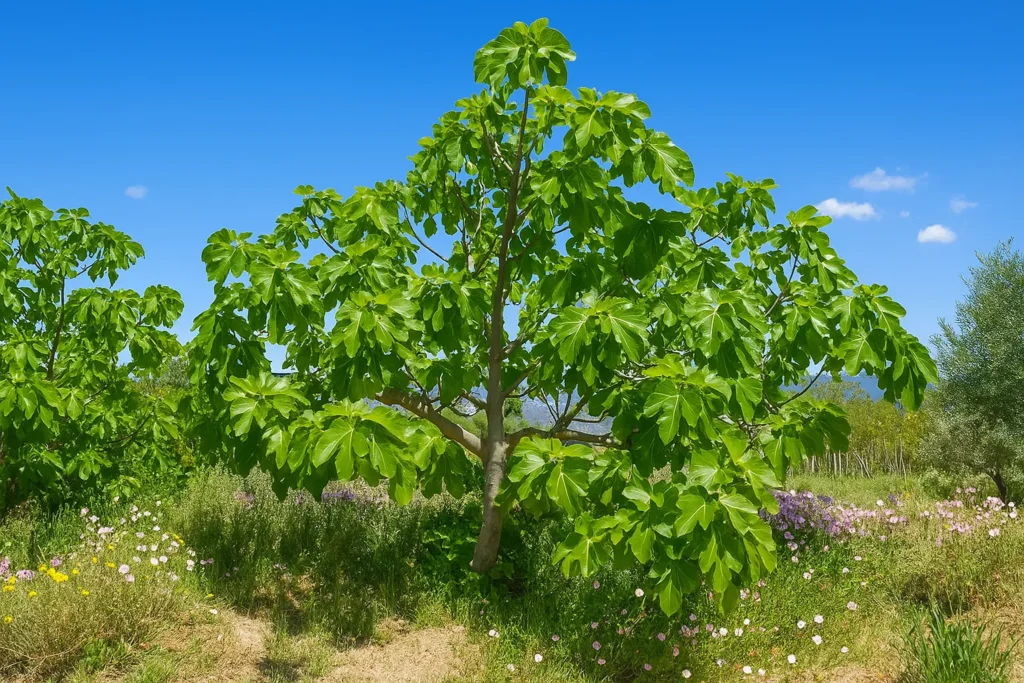
The disadvantage of pruning the fig tree: imposing dimensions
The adult fig tree occupies a considerable space in the garden with its flared shape and its branches that extend up to 6 meters in diameter. Vigorous varieties can cover an area of 75m², making any other significant cultivation impossible in this area. Its natural tendency to grow in clumps, forming several trunks, further accentuates this ground cover.

Its rapid growth often surprises novice gardeners. Without regular pruning, the fig tree quickly becomes disproportionate to the available space. This is another drawback to consider in the long run.
Compact varieties suitable for small gardens
For the gardens restricted, some fig cultivars offer more modest development. The varieties 'Petite Négri', 'Violette de Bordeaux' or 'Ronde de Bordeaux' have controlled growth while producing tasty fruits. Their height generally remains less than 3 meters at maturity.
Practical solutions despite the disadvantages of the fig tree
Despite these constraints, there are several approaches to harmoniously plant a fig tree in your garden. There growing in pots, for example, is one of the ideal solutions for controlling its development. (especially its roots) while benefiting from its ornamental and taste qualities. A container of 50-80 cm in diameter provides sufficient space for the roots while limiting their expansion.
- Choose self-fertile fig tree varieties like 'Brown Turkey' Or 'Bordeaux Red' which bear fruit without a pollinator
- Choose a strategic location to plant your fig tree, away from buildings but benefiting from a southern exposure to encourage the fruit to ripen.
- Install an easy-to-clean covering under the tree to simplify the collection of fallen fruit
Pot culture: an ideal solution for controlling fig trees
To successfully grow in pots, choose a wide rather than a deep container with good drainage. A mixture of potting soil, compost, and sand ensures a well-draining yet nutritious substrate. Regular watering and biannual fertilization compensate for the nutrient limitations of this confined growing environment, while still allowing for good fruit production.
FAQ – Everything you need to know before planting a fig tree
How long does a fig tree live?
A fig tree (Ficus carica) can live between 50 and 70 years old in good conditions. Some well-maintained specimens grown in mild climates even exceed the 100 yearsIts longevity depends heavily on the quality of the soil, exposure, regular pruning and, above all, the management of its roots.
How far should a fig tree be planted from the house?
Absolutely avoid planting a fig tree in the immediate vicinity of your home. Its root system is very invasive and can extend up to 15 meters. A minimum distance of 5 to 10 meters foundations, pipes, septic tanks or walls. If space is limited, favor the pot culture.
Can you transplant a fig tree?
Yes, a fig tree can be transplanted, but the operation must be carried out with care. The best time is between November and February, during the vegetative rest. Water abundantly before and after moving. Provide a large root ball so as not to cut the main roots too much, and prune the branches lightly to rebalance root loss. Regrowth is possible if the tree is not too old.
What to do in case of burn caused by fig tree sap?
THE latex of the fig tree contains furocoumarins which become phototoxic in the sun, causing burns. In case of contact:
– Wash immediately with soap and water.
– Protect the area from the sun for 48 hours.
– Apply if necessary a soothing cream based on calendula or aloe vera.
– Consult a doctor in case of blisters or intense reaction.
Are fig leaves dangerous?
Yes, the leaves of the fig tree are rough, hairy and also contain irritating latex. They can cause:
- Of the itching in contact
- Of the respiratory allergic reactions (rhinitis, conjunctivitis)
- A photosensitization in case of skin contact + sun exposure
When pruning or harvesting, wear gloves, long sleeves and goggles.
What exposure for a fig tree?
The fig tree likes warmth. It thrives in a southern or southwest exposure, sheltered from the wind. He needs at least 6 hours of direct sunlight per day to ensure good fruiting. In cold regions, choose a south-facing wall to create a protective microclimate.
Where not to plant a fig tree?
Avoid planting a fig tree:
– Near a house, a swimming pool or a concrete slab,
– Under power lines (because of its height),
– In soil that is too wet or poorly drained,
– In a passage area : its fallen ripe fruits stain and slip.
In the small gardens, prefer pot culture or compact varieties like 'Petite Négri'.
